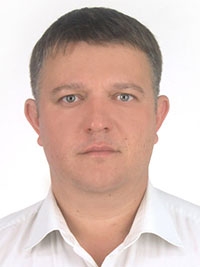Sergey Sekin: Business Information as most valuable exhibition goods
The Glass Union of Russia association, a key partner of the Mir Stekla exhibition, will offer a vast conference programme addressing pressing industry matters. Union Executive Director Sergey Sekin has told us about tasks the Glass Union of Russia has for 2022 and how the Mir Stekla exhibition can help with their achievement.

Sergey Viktorovich, what does the Mir Stekla exhibition mean for the industry professionals? Is the participation in this exhibition important?
In my opinion, Mir Stekla is not just the major venue for meetings between buyers and sellers (the majority of glass market actors known each other well) but also a unique opportunity to receive the most valuable goods, information. The participation in an exhibition conference programme is a perfect chance not only to hear about industry development plans and legislative amendments directly from ministers and agency heads but also to ask an important question and to instantly receive an answer.
What tasks does the Glass Union of Russia set for 2022 and how can the exhibition help with their achievement?
The primary goal of our Union is to deal with industry problems and to promote favorable investment climate and industry regulations. Speaking of industry tasks, we will prioritize climate change and higher energy efficiency of enterprises in 2022. Obviously, we will be discussing these issues one way or another during the exhibition conference programme.
The use of cullet in secondary production is a common concern of all manufacturers. Cullet significantly reduces the melting point of the charge, which accordingly allows to reduce energy consumption for melting and emissions of carbon dioxide (greenhouse gas). However, at present, there is a shortage of high-quality cullet suitable for processing in the Russian market of secondary resources.
There is yet another important task to be addressed by the Glass Union next year – participation in the elaboration of Russian climate laws. We have submitted our proposals for the Strategy of Low-Carbon Development of the Russian Economy in the Period until 2050, which envisages higher energy efficiency of manufacturing industries, construction, housing and public utility sector by means of new building materials and instruments to control the compliance with energy efficiency requirements to project documentation. Clause 2 of the strategy indicates the significance of energy effective glass in housing construction. The energy saving programme for construction and operation of buildings should attribute a leading role to translucent structures, considering that the current level of their thermal insulation and energy efficiency is not inferior or even better than those of enclosing structures of buildings. So, we view the participation in the drafting of a strategy action plan as a key objective of ours. We have submitted our proposals to the Economic Development Ministry and are expecting to receive the first combined draft from it.
The government is due to approve the plan in June 2022. We will be able to discuss specific measures envisaged by this document, the sequence of their implementation and the achievement of the final goal of reduced greenhouse gas emissions at the Mir Stekla exhibition.
The Glass Union took active part in the drafting of the interstate standard GOST ISO 10077-1 “Characteristics of heat engineering window blocks, door blocks and shutters. Calculation of the heat transfer coefficient.” What significance does it have for the industry and construction in general?
The interstate standard to take effect on July 1, 2022, has been drafted at the initiative of our Union. It is identical to the international standard and aims to improve control over the compliance with mandatory energy efficiency requirements for buildings at every stage of design, construction and operation.
The standard contains a formula for calculating the heat transfer coefficient, which can become a universal method for calculating the coefficient for translucent structures. Until today, our glass companies, manufacturers of translucent structures have used approximately the same methods, but with minor differences. The new standard will provide a uniform approach to the calculation and comparability of results. This calculation can be used both for design and for state examination of project documentation.
We will speak about that again at the forum. The agenda of a roundtable and a conference is being drafted. We are waiting for proposals from all industry actors!
Take part in the Mir Stekla exhibition!
You may book your stand on the organiser website.
Other industry news:
Sergey Alyokhin: There is need for uniform rules and standards for facade curtain systems and translucent facades
The Façade Union believes that it is necessary to start with the development of general requirements for façade works, check how these rules are met in practice, put them on paper as Façade Union standards, apply for some time, and then suggest the elaboration of national standards.

